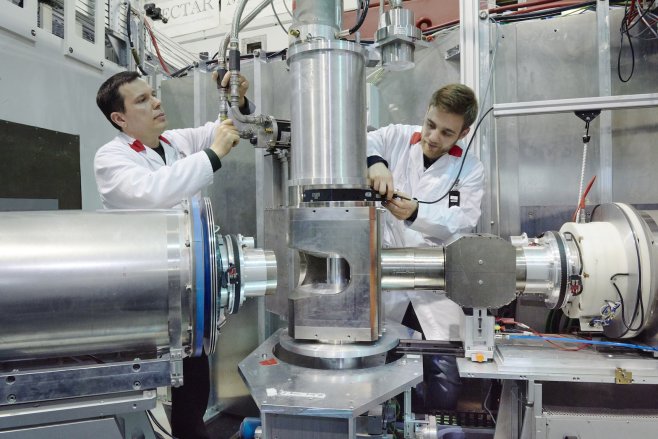Copyright 2012 neutronsources.org | All rights reserved. | Powered by FRM II | Imprint / Privacy Policy
Polarized Neutron Diffraction: A Powerful Tool to Study Weak Magnetic Interactions
Date: 19 April 2021
Source: JCNS
Identifying, understanding, and predicting fundamental magnetic interactions in materials is an essential step toward their utilization in novel devices. One of these basic interactions is the Dzyaloshinskii-Moriya interaction (DMI), a type of coupling between neighbouring spins that tilts them slightly when they would otherwise tend to align. Although this DMI-induced canting is usually modest, it can lead to small net magnetic moments in “weak ferromagnets” and its direction has a significant impact on spintronic applications and topological materials. In a current paper in Physical Review X, an international team of researchers led by neutron scientists from Forschungszentrum Jülich and RWTH Aachen University present polarized neutron diffraction (PND) as an efficient technique for determining the absolute direction of the DMI in bulk materials.

Dr. Vladimir Hutanu (left) and PhD student Henrik Thoma at the instrument POLI. Source: Wenzel Schürmann / TU München
In PND, a beam of neutrons, filtered through a device that transmits only one spin state, scatters off a material, and the resulting diffraction pattern reveals information about the material’s magnetic structure at the atomic level. In this work, the scientists present their study of how to relate measured PND data to the absolute DMI direction. “With this approach, we unambiguously answer a long-standing question about the absolute sign of the DMI in various weak ferromagnetic systems with a wide range of crystal symmetries,” explains Dr. Vladimir Hutanu, instrument scientist at the single crystal diffractometer POLI at the Heinz Maier-Leibnitz Zentrum (MLZ) in Garching. POLI, operated together by the Institute of Crystallography of RWTH Aachen University and the Jülich Centre for Neutron Science, was the instrument used to carry out the experiments. “We support our findings with ab initio calculations, which reproduce our experimental results. We believe this technique will form the basis for future DMI studies in weak ferromagnets and encourage further PND experiments to reveal the DMI direction in many more compounds.”